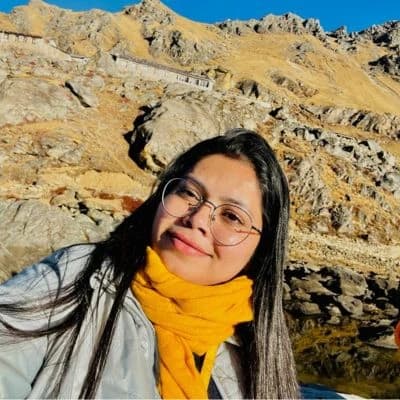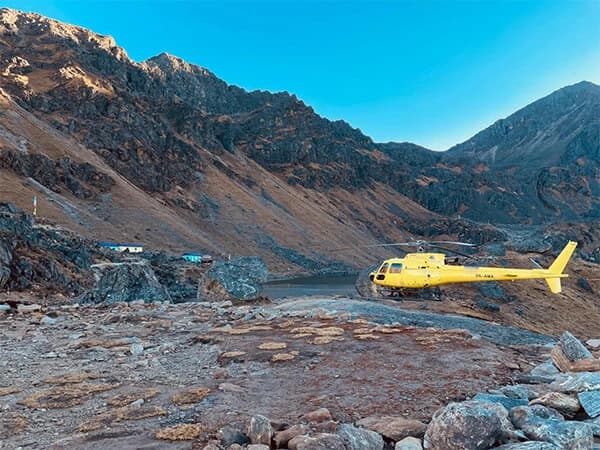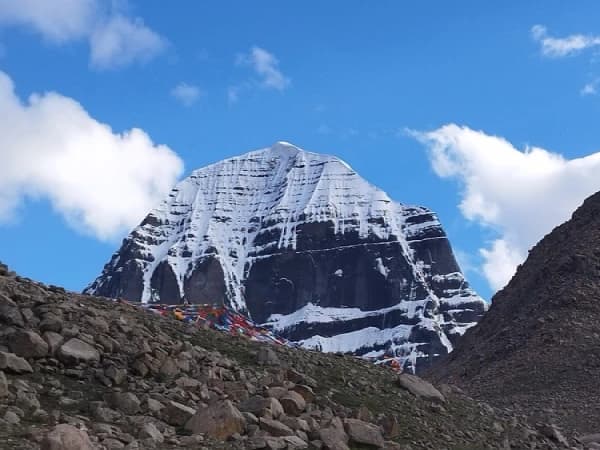Nepal is a country of breathtaking beauty, where snow-capped mountains meet serene bodies of water to create landscapes that are both awe-inspiring and tranquil. The lakes of Nepal, ranging from alpine freshwater lakes to sacred pilgrimage sites, offer visitors a chance to experience the country’s natural beauty, cultural richness, and biodiversity. Whether you’re an adventure enthusiast, a spiritual seeker, or a lover of pristine lake views, Nepal’s lakes promise unforgettable experiences.
Types and Categories of Lakes in Nepal
Glacial Lakes

Glacial lakes in Nepal are natural lakes formed by melting glaciers. Found at high altitudes, they feature crystal-clear water surrounded by rugged mountain ranges and alpine forests.
- Tilicho Lake: Situated at 4,919 meters in the Manang District, this is the world’s highest alpine lake, offering stunning views of the Annapurna II and surrounding snowy peaks.
- Gokyo Lakes: Found in the Gokyo Valley of the Solukhumbu District, these oligotrophic lakes are known for their pristine blue waters and spiritual significance.
Freshwater Lakes

Nepal’s freshwater lakes are vital for biodiversity, hosting species of birds and aquatic organisms while supporting traditional villages along their shores.
- Phewa Lake: Located in Pokhara City in the Kaski District, this is one of Nepal’s most popular lakes, ideal for boating and fishing.
- Begnas Lake: A tranquil freshwater lake in the southern belt of Pokhara Valley, surrounded by lush forests and terraced farmland.
Sacred and Cultural Lakes

The holy lakes of Nepal are integral to the country's religious and cultural identity. They hold spiritual significance and are celebrated during auspicious occasions and festivals.
- Gosaikunda Lake: This sacred lake in the Rasuwa District is surrounded by legends and located in Langtang National Park, making it a popular destination for trekkers and pilgrims.
- Shey Phoksundo Lake: A pristine lake in the Dolpa District, this beautiful destination is revered for its untouched beauty and cultural importance in Tibetan Buddhist traditions.
20 Must-Visit Lakes in Nepal
1. Rara Lake

Rara Lake, Nepal’s largest lake, is located in the remote Mugu district within Rara National Park. Spanning an area of 10.8 square kilometers, this lake sits at an altitude of 2,990 meters. Known as the "Queen of Lakes," Rara is surrounded by lush forests of pine, spruce, and juniper, which provide a habitat for species like the Himalayan black bear and musk deer. Activities such as boating, hiking, and photography make it an essential stop for nature enthusiasts.
2. Gokyo Lakes

The Gokyo Lakes in the Everest region are a system of six spectacular glacial lakes at altitudes ranging from 4,600 to 5,000 meters. These lakes are part of the Sagarmatha National Park and are a UNESCO World Heritage Site. Gokyo Ri, a nearby viewpoint, offers unmatched views of Mount Everest and surrounding peaks. The lakes are also significant for Buddhist and Hindu rituals, particularly during the Janai Purnima festival.
3. Shey Phoksundo Lake

Shey Phoksundo Lake, located at 3,611 meters in the Dolpo region, is renowned for its striking turquoise-blue waters. Surrounded by rugged cliffs and sparse vegetation, the lake is a centerpiece of Shey Phoksundo National Park. It has no aquatic life due to its high mineral content, but the area around it is home to the elusive snow leopard. The trek to Shey Phoksundo is an adventure into one of Nepal's most remote and untouched regions.
4. Gosaikunda Lake

A sacred pilgrimage site, Gosaikunda Lake is perched at 4,380 meters in the Langtang National Park. It holds immense religious significance for Hindus, who believe the lake was created by Lord Shiva. Thousands of devotees visit during the Janai Purnima festival to bathe in its holy waters. Surrounded by majestic mountains, Gosaikunda is also a popular stop on the Langtang Valley Trek.
5. Tilicho Lake

At an altitude of 4,919 meters, Tilicho Lake in the Annapurna range is the highest lake in the world. Its crystalline waters are fed by glacial melt from surrounding peaks. Reaching Tilicho involves a challenging trek that forms part of the Annapurna Circuit, offering trekkers a blend of adventure and breathtaking views. Spring and autumn are the best seasons to visit this natural wonder.
6. Phewa Lake

Phewa Lake, located in the city of Pokhara, is one of Nepal's most iconic freshwater lakes. The lake is famous for its reflective surface, which mirrors the Annapurna and Machapuchare peaks. Visitors enjoy activities like boating, fishing, and paragliding, while the Tal Barahi Temple, situated on an island, adds a spiritual dimension. The bustling lakeside area is perfect for dining, shopping, and nightlife.
7. Begnas Lake

Begnas Lake offers a quieter and more serene alternative to Phewa Lake. Situated about 15 kilometers from Pokhara, the lake is surrounded by lush greenery and terraced hills. It’s an ideal spot for fishing, boating, and meditating in peaceful surroundings. Local eateries serve freshly caught fish, adding a culinary highlight to your visit.
8. Rupa Lake

Close to Begnas Lake, Rupa Lake is a small, tranquil freshwater body. This lake is perfect for those seeking solitude and bird-watching opportunities, as it’s home to several migratory and native bird species. Its proximity to Pokhara makes it a convenient addition to any travel itinerary in the area.
9. Panch Pokhari Lake

Located in the Sindhupalchowk district, Panch Pokhari is a group of five sacred lakes at an altitude of 4,100 meters. These lakes are a significant pilgrimage site, particularly during the Janai Purnima festival, and offer trekkers spectacular views of the Jugal Himal range. The name "Panch Pokhari" translates to "five lakes," symbolizing purity and serenity.
10. Tsho Rolpa Lake

Tsho Rolpa, one of the largest glacial lakes in Nepal, lies at an elevation of 4,580 meters in the Rolwaling Valley. Surrounded by towering peaks, this lake is accessible via a challenging trek that offers glimpses of unspoiled Himalayan landscapes. The lake’s increasing water level due to glacial melting has raised concerns about its potential environmental impact.
11. Kapuche Lake

Kapuche Lake, located in the Annapurna region, is Nepal’s lowest-altitude glacial lake, sitting at 2,546 meters. Its unique feature is the floating icebergs, which form from avalanches into the lake. Kapuche has become a rising star among trekking destinations for its easy accessibility and stunning scenery.
12. Ghodaghodi Lake

Situated in the Kailali district of western Nepal, Ghodaghodi Lake is a Ramsar-listed wetland and an important biodiversity hotspot. The lake complex supports rare species such as swamp deer and smooth-coated otters, along with numerous bird species. Ghodaghodi also has cultural significance, with local communities worshiping it as a divine entity.
13. Birendra Lake

Nestled near the Manaslu Base Camp, Birendra Lake is a glacial lake formed by the Manaslu Glacier. Its icy blue waters and proximity to the towering Manaslu massif make it a favorite spot for trekkers. The lake is often part of the Manaslu Circuit Trek.
14. Imja Tsho Lake

Imja Tsho, also known as Imja Lake, lies in the Khumbu region at an altitude of 5,010 meters. This glacial lake is fed by meltwater from the Imja Glacier and has been expanding due to climate change. It’s a significant stop for those trekking toward Island Peak Base Camp or the Everest region.
15. Ice Lake (Kicho Tal)

Ice Lake, locally called Kicho Tal, is a hidden gem located above Manang at an altitude of 4,620 meters. It offers spectacular views of the Annapurna range and is a popular day hike for trekkers in the area. Its frozen appearance during colder months adds to its allure.
16. Mai Pokhari

Located in the Ilam district, Mai Pokhari is a freshwater lake surrounded by lush forests. This Ramsar-listed wetland is home to diverse flora and fauna, including orchids, ferns, and rare amphibians. The lake holds religious significance for Hindus and Buddhists alike.
17. Gangapurna Lake

Gangapurna Lake in the Annapurna region is fed by meltwater from the Gangapurna Glacier. Located near Manang village, it offers picturesque views and a tranquil atmosphere. Visitors can enjoy a short hike from Manang to admire its turquoise waters and surrounding landscapes.
18. Bish Hajari Lake

Bish Hajari Lake, located in Chitwan National Park, is a Ramsar site and an essential wetland for bird and aquatic species. The name "Bish Hajari," meaning "20,000," refers to the lake’s network of interconnected water bodies. It’s a popular spot for bird-watchers and wildlife enthusiasts.
19. Kajin Sara Lake

Image: Getty Images
Kajin Sara Lake in the Lamjung district is one of Nepal's newly discovered lakes. Claimed to be the highest lake globally at 5,200 meters, it offers unmatched views of the Annapurna range. Its remote location makes it a destination for adventurous trekkers seeking untouched beauty.
20. Ramaroshan Lake

Located in the Achham district of western Nepal, Ramaroshan Lake is part of a wetland system of 12 lakes. Known for its tranquil environment, it’s an emerging destination for eco-tourism and provides opportunities for camping, fishing, and exploring local culture.
Activities to Do Around Lakes
- Boating and Kayaking: Available at lakes like Phewa and Begnas.
- Camping and Stargazing: Perfect for remote lakes such as Tilicho.
- Wildlife Watching: Especially around biodiversity-rich lakes like Rara and Ghodaghodi.
Practical Tips for Visiting Nepal’s Lakes
- Best Time to Visit: Spring and autumn offer clear skies and mild weather, ideal for lake visits and trekking journeys.
- Essential Gear: Pack layered clothing, sturdy boots, and eco-friendly supplies for high-altitude trekking experiences.
- Sustainable Tourism: Respect local traditions and natural environments to preserve Nepal’s stunning lakes and their ecosystems.
Final Thoughts
Nepal’s lakes, from the glacial wonders of Tilicho and Gokyo to the sacred waters of Gosaikunda, are more than just beautiful destinations. They are vital ecosystems, cultural treasures, and sanctuaries of natural beauty. Whether you seek adventure, spirituality, or breathtaking views, exploring Nepal’s famous lakes promises memories to last a lifetime.
Frequently Asked Questions
How many lakes are there in Nepal?
Nepal has over 5,000 lakes. They vary in size and type, ranging from glacial lakes in the Himalayan region to tectonic and oxbow lakes in the Terai. These lakes are vital for biodiversity, tourism, and cultural practices.
What is the best time to visit Rara Lake?
The best time to visit Rara Lake is during the spring (March to May) and autumn (September to November) seasons. The weather is mild, and the skies are clear, offering stunning views of the lake and surrounding mountains.
How deep is Rara Lake?
Rara Lake has a maximum depth of 167 meters (548 feet), making it the deepest lake in Nepal. It covers an area of about 10.8 square kilometers.
Which is the cleanest lake in Nepal?
Shey Phoksundo Lake, located in the Dolpa District, is considered one of the cleanest lakes in Nepal. Its pristine turquoise waters and remote location have preserved its natural purity.
Which district is known as the seven lakes of Nepal?
The Kaski District is often referred to as the "Seven Lakes District" because it houses famous lakes such as Phewa, Begnas, Rupa, Khaste, Dipang, Maidi, and Kamal Pokhari.
What animals are in the Rara Lake?
Rara Lake is home to various aquatic species, including the rare snow trout. Its surrounding forests host wildlife such as red pandas, musk deer, Himalayan black bears, and numerous bird species, including migratory ones.
What is the significance of Tilicho Lake?
Tilicho Lake, at an altitude of 4,919 meters, is one of the highest lakes in the world. It is a prominent trekking destination and holds cultural significance for Hindus as a site mentioned in ancient scriptures.
































